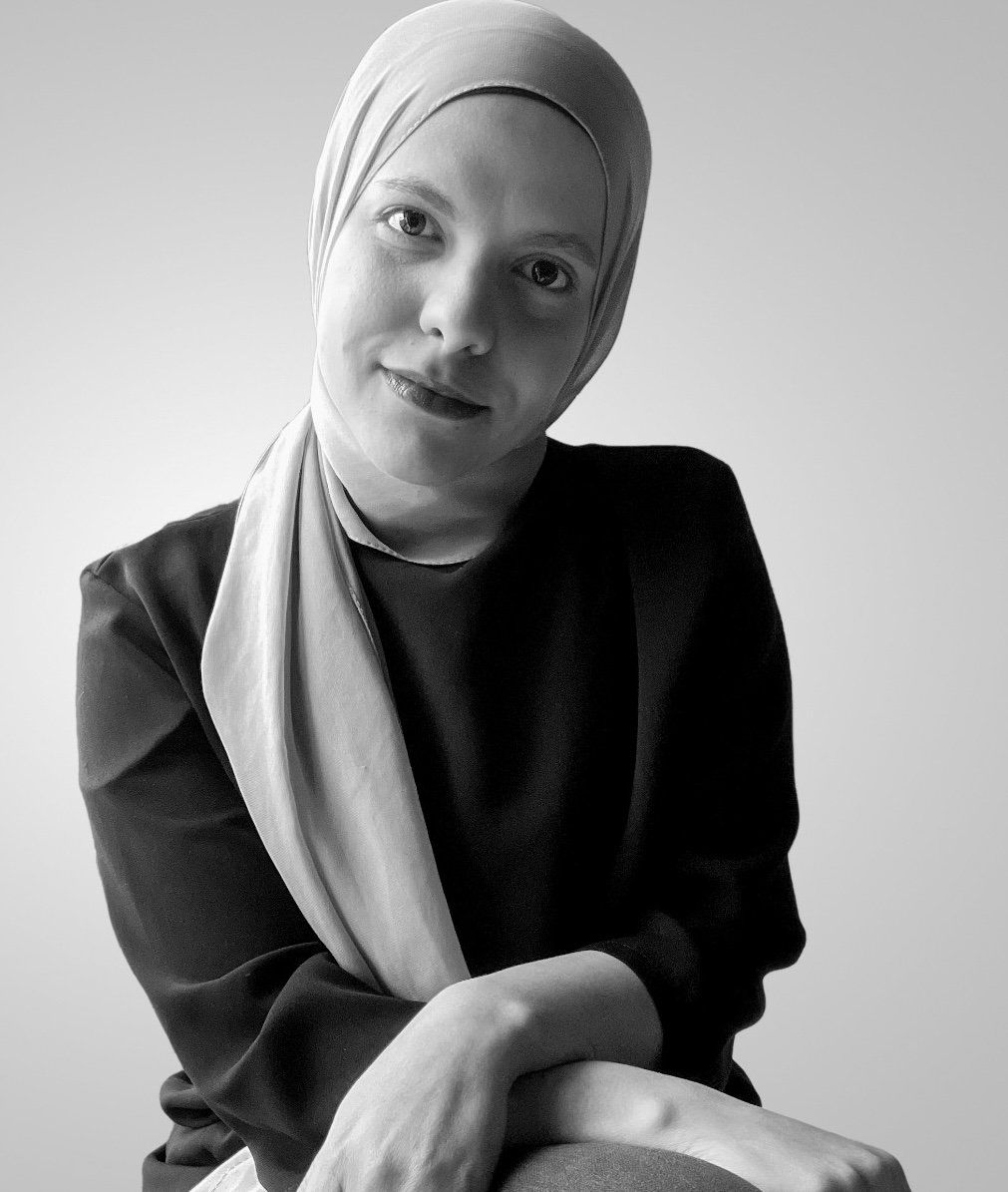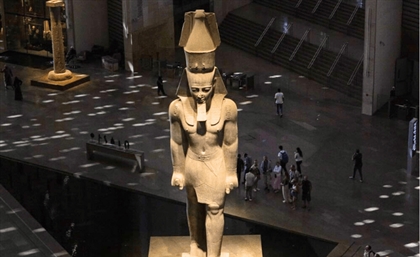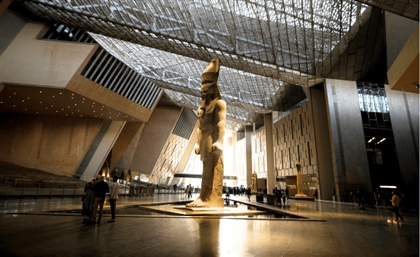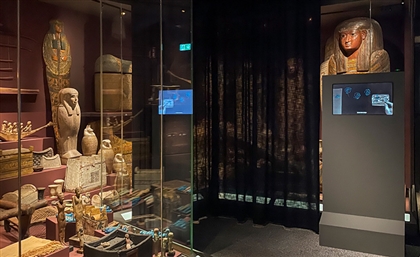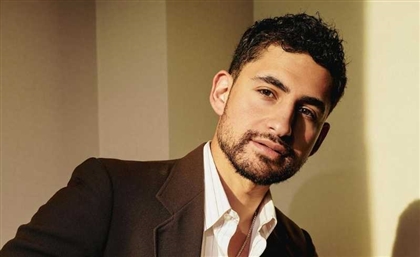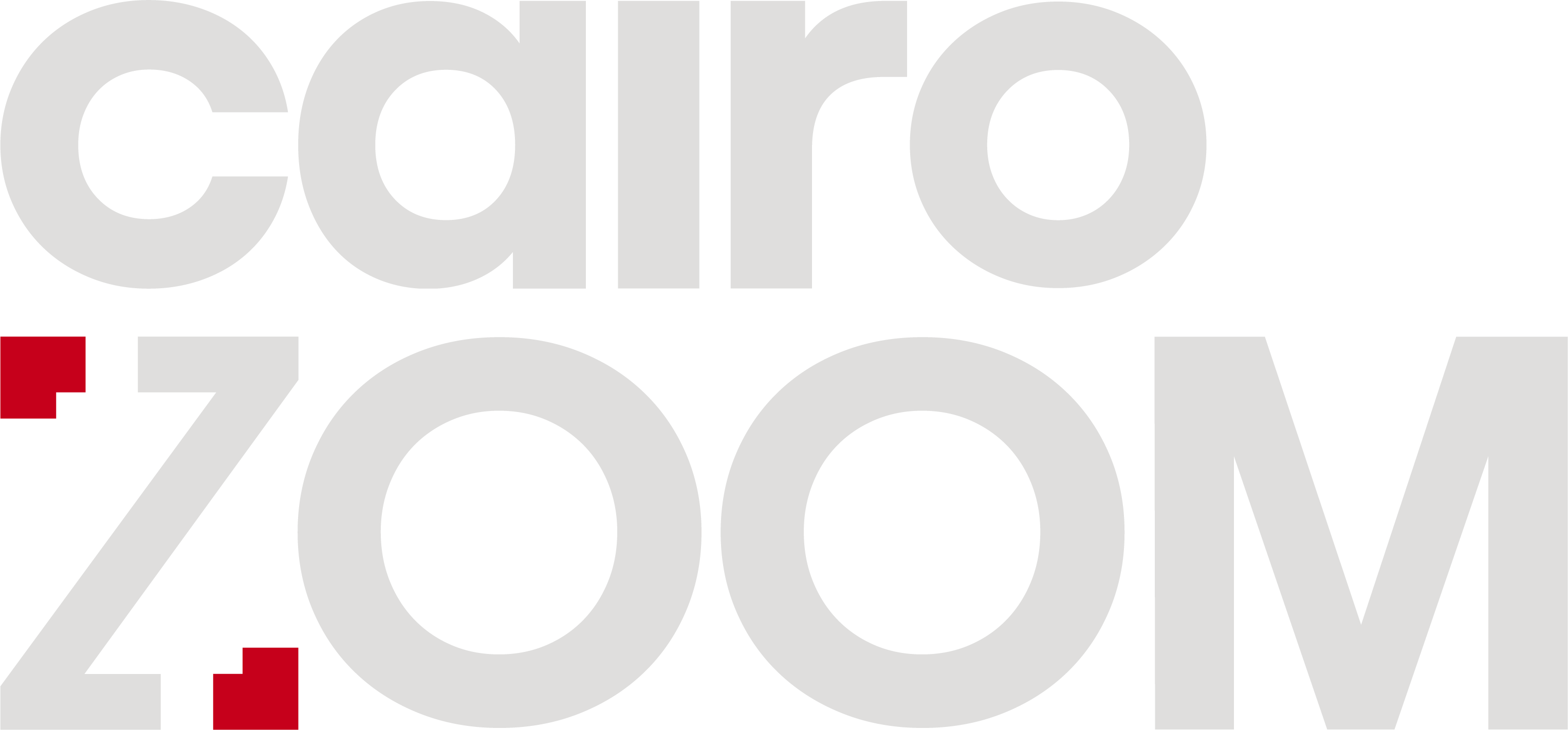The Designers Behind the GEM Inauguration Break Down Their Process
The Grand Egyptian Museum’s inauguration united architect Mohamed Fares (Alchemy) and production designer Mohamed Attia in a collaboration that turned Egypt’s biggest cultural moment into a design sp
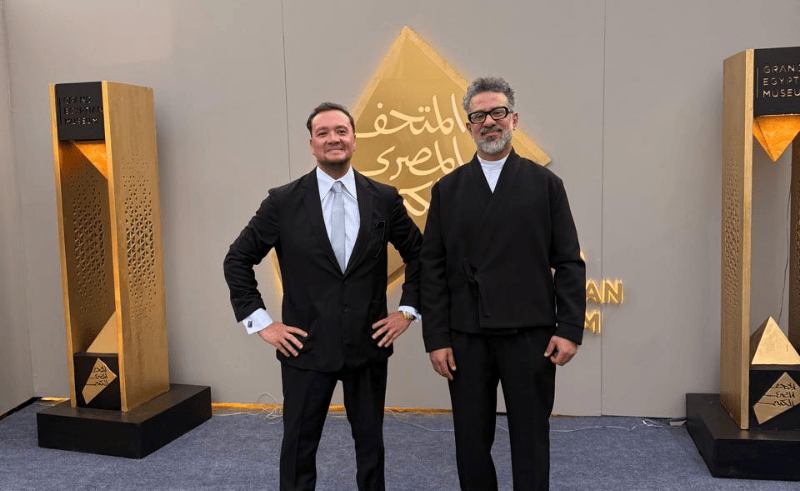
The inauguration of the Grand Egyptian Museum (GEM) was, without question, a historical milestone, but it was also something rarer: a feat of interdisciplinary design collaboration. Behind it was a dialogue between two pioneering Egyptian creatives, Mohamed Attia and Mohamed Fares, whose worlds of cinema and design converged to bring Egypt’s long-awaited grand opening to life.
The duo had previously collaborated on the Mummies’ Golden Parade, the historic procession that carried 22 royal mummies from the Egyptian Museum in Tahrir to their new resting place at the National Museum of Egyptian Civilisation, a project that achieved near-mythic status for its blend of cinematic grandeur and national pride.
Before GEM’s official debut, Alchemy, led by Chief Designer Mohamed Fares, had already left its mark on the museum’s halls with The King’s Feast during Cairo Food Week. True to his design language, Fares continues to blur the line between identity and modernity, from reviving the heritage interiors of TamaraHaus in Downtown Cairo to leading internationally acclaimed architectural and interior projects that range from lifestyle destinations to large-scale cultural revival efforts.
Mohamed Attia, meanwhile, is the architect-turned-production designer who helped define the visual language of modern Egyptian cinema. An award-winning art director and production designer, his credits include The Blue Elephant, Afrah El Qoba and Coco Chanel. His collaborations with Mohamed Khan, Yousry Nasrallah, Tarek Alarian, and Marwan Hamed have shaped how Egyptian storytelling looks and feels on screen.
For GEM’s opening, Alchemy Design Studio led the spatial and sensory experience, curating the architectural journey from arrival to farewell, while Attia, with his cinematic instinct, directed the stage and audience layout, turning the museum into a live set worthy of Egypt’s grandest cultural reveal.
In this exclusive interview with CairoScene, the duo shares sketches, behind-the-scenes footage, and a closer look at the creative process that made the Grand Egyptian Museum’s opening a performance in its own right.
The Concept-ea1fe0db-8ffd-4bbc-a77b-7a145ec05e2e.png)
Mohamed Attia’s design for the inauguration was built on three main pillars: the pyramid and its module, the Grand Egyptian Museum as an architectural icon, and the ancient obelisk that anchors the site. He explained that these elements guided every decision. “I had to respect their visual dialogue,” he says. “Every line I drew followed theirs.”
The Layout
-5947e26c-009a-4425-93fa-5f632527010e.png)
-7fa86a36-3748-40e4-8346-d9972a641d10.png)
While architecture often relies on squares as a design module, Attia broke convention. “I didn’t use squares; I followed the museum’s lines—and that led to a grid of triangles,” he explains. This geometric rhythm became the foundation of every design choice, blurring the boundaries between venue and structure so the stage appeared to grow organically from the museum itself.
The Arrival Experience
-cdb6bffc-2d7f-4655-b3a7-3a4ac0cc7ab5.png)
-7984e286-0d7d-43b2-b7d2-f094c6f4537a.png)
From the very first step, Alchemy crafted a seamless, symbolic journey. The arrival plaza and drop-off zone—where President Abdel Fattah El Sisi welcomed world leaders and royals—were conceived as a ceremonial threshold to the museum. A wooden platform and cascading staircase, softly illuminated by indirect light, guided guests toward a bronze-painted wall etched with an extruded geometric pattern: a contemporary echo of the museum’s architectural language. “The approach achieved a monumental effect that mirrored the timeless elegance of the Grand Egyptian Museum itself,” Fares explains.
The Interior and Landscape Experience
-597de286-e768-4a6b-9055-b56624e1464e.png)
Alchemy designed the presidential, royal, and VIP halls, along with connecting lounges and corridors, each curated through scent, light, landscape, and Egyptian art by TAM Gallery and Lina Mowafi. “We designed through the five senses, not just the eye,” Fares adds.
The landscape palette drew from Egypt’s own heritage—papyrus, olive trees, and lotus plants, evoking wisdom, peace, and rebirth. Every piece of furniture and urban element was custom-built to harmonize with the museum’s architectural rhythm, creating visual and material unity throughout.
The Cinematic Vision
-bad8ab3b-afd2-4771-a17c-d98d2401ba49.png)
As a production designer, Attia approached the project like a filmmaker. “I had to think like a director—where the camera stands, how the story unfolds,” he says. Every shot, movement, and reveal was choreographed to create a dialogue between performance and audience, ensuring the event could be captured as beautifully on camera as it felt in person.
The Technology-25418b84-e7c7-400e-8c52-f64b1878b908.png)
Behind the spectacle was an immense technical challenge. The stage relied on 11 hydraulic systems—a temporary yet groundbreaking setup that Attia describes as “a huge risk and an engineering experiment we had to perfect in a short time.”
Nine hydraulic walls moved telescopically, concealing and then dramatically revealing the orchestra near the finale. Sherihan made her grand entrance rising from below on a hydraulic podium, while set pieces shifted in sync with the music—a live performance in constant motion.
The Invitation-79f5c5de-bba1-4561-b196-753acb9e80c1.png)
-59036ab2-af5b-41d6-9311-30173101c387.png)
-07a9bc5f-c5e9-40ec-b91c-b2239e387e60.png)
Perhaps the most symbolic gesture of all was the official invitation, conceptualised two years earlier. Designed as an abstract model of the museum, each invitation contained a missing puzzle piece engraved with a country’s name. Guests completed the invitation by inserting their piece, symbolising that the world itself was helping complete the Grand Egyptian Museum.
“It was all rooted in one message: The Grand Egyptian Museum is Egypt’s gift to the world,” says Fares. The heads of state received bronze invitations crafted by Mashrab, while the final puzzle piece, placed on stage by President El Sisi, was sculpted in Egyptian alabaster by Marmonil. Other guests received a replica of Tutankhamun’s sarcophagus, complete with miniature treasures, each variation a symbol of Egypt’s craftsmanship and generosity.
The Museum’s Commercial Identity-ac9d7628-99e8-4d62-ace2-a30f0f749770.png)
Image courtesy of Mariam Shebl, Architectural Photographer
Beyond the inauguration, Alchemy also designed the Grand Egyptian Museum’s official gift shop and the facades and brand identity of all commercial spaces. Each storefront followed a unified visual language that respected the museum’s geometric order and material palette. Typography and signage were rendered in the bespoke Arabic font created exclusively for the museum, embedding Egyptian identity across every nameplate and banner.
Every element, from costume design and camera choreography to lighting, makeup, and guest experience, was developed through a collective creative committee, where designers and directors met in workshops to align on one singular vision.
Months before the event, this collaboration produced a committee-approved layout that extended beyond stage and spatial design, spanning more than 25,000 square meters and defining the entire flow of the event.
Trending This Week
-
Nov 19, 2025







